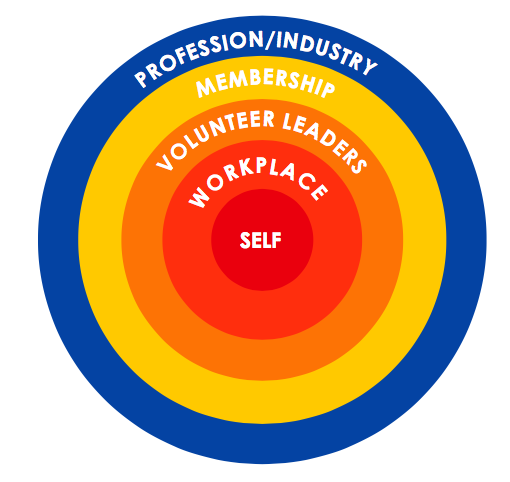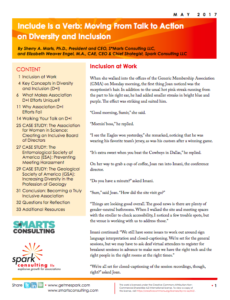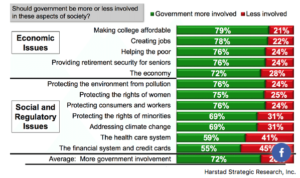Did you miss the July 12 webinar my Include Is a Verb co-author Sherry Marts and I presented for the Wild Apricot Experts series on living your talk on D+I? Never fear! The recording is now available:
Sherry and I got to as many questions as we could in the sidebar chat during the webinar, but as usual, we missed a few, so we’re answering them below:
Question: When holding a free public event, do you post a code of conduct? We have kid friendly “Core Values,” and I wonder if posting that would promote a safer environment.
EWE (addressed during the chat):It might not cover every situation you might want to try to address, but it certainly can’t hurt.
SM (more complete answer):Yes, definitely. Something short and simple, along the lines of:
[Organization] is committed to ensuring a safe and welcoming environment for all participants at [event]. We expect all participants at [event] to abide by this Code of Conduct in all venues at [event], including ancillary events and official and unofficial social gatherings.
- Exercise consideration and respect in your speech and actions.
- Refrain from demeaning, discriminatory, or harassing behavior and speech.
- Be mindful of your surroundings and of your fellow participants.
- Alert community leaders if you notice a dangerous situation, someone in distress, or violations of this Code of Conduct, even if they seem inconsequential.
IF YOU ARE BEING HARASSED, NOTICE THAT SOMEONE ELSE IS BEING HARASSED, OR HAVE ANY OTHER CONCERNS, CONTACT [NAME] AT [CONTACT INFORMATION]. [Alternatively: PLEASE CONTACT A MEMBER OF THE [organization] STAFF IMMEDIATELY. Staff can be identified by [clothing, name badges, or other way to ID staff]. All reports are confidential.
Question: One thing to consider – while harassment is most frequently men harassing women, using language that presumes that may make men or nonbinary people uncomfortable coming forward. Also, gender isn’t binary – language like ‘men and women’ can make nonbinary people feel invisible / excluded.
SM: Yes, all of that is true. However, it becomes really awkward and clumsy to try to address all possible combinations of target/harasser each time one is talking about a harassment situation. And harassment is about 85-90% men harassing women, so that ends up being the simplest way to present it. When I do longer (i.e. two-four hours) workshops, I do talk about other harassment scenarios, gender identity, etc.
And, frankly, when it comes to talking about this stuff, I really am not concerned about making sure the men present are comfortable. I’d prefer it if they were just a wee bit uncomfortable.
EWE: While using gender-neutral language is overall a good practice, as Sherry points out, meeting harassment is largely a gendered problem. In my view, it’s a case where obscuring the role of gender is not only not helpful to solving the problem, it actively works against our ability to address it.
Question: Is it considered patronizing to seek diversity by offering to pay that board member’s financial obligation? Or do you change the obligation to “give or get” a specific amount?
(Seeing as we’re writing for an association crowd here, a bit of explanation might be in order. In fundraising organizations, it’s common for board service to come with a financial obligation. Each board member is required to contribute a certain (usually significant) amount of money to the organization each year of her board service. This obviously restricts your pool of candidates, which can make diversifying your board difficult. Blue Avocado has a good piece that explains this conundrum in more detail.)
EWE: Yes, finding alternate ways for your board members to meet their financial obligation is important to board diversity. The “give or get” method is one way of doing that (in which your board member either needs to GIVE the amount specified herself or GET other donor/s to give that amount). You can also think about non-financial ways a board member could make significant contributions to the health of the organization, for instance, by putting in significant time nurturing relationships with major donors, by providing services or goods the organization needs, etc.
SM: Yes, it is worth considering whether it is a barrier to diversifying your Board membership. Ask:
- Why do we have this obligation?
- What strategic goal does this serve?
- What else could serve this goal without putting a financial burden on Board members?
I know some organizations expect Board members to pay their own travel to meetings. One organization I worked with changed that to offer to reimburse Board members for travel, and those who could afford to pay it could submit their reimbursement form and indicate that they did not want to be paid back, and that this was an “in-kind” donation to the organization. It worked well, no one (other than the admin and accounting staff) knew who paid and who was paid for.
I have heard of the “give or get” policy that requires Board members to either donate or solicit donations. Again, if there is an amount specified that could be a barrier to participation. If it is as “give or get, within your means” with the actual amount determined by each Board member, that could go a long way to lowering the barrier. The Board could also establishe a policy for waiving the “give or get” requirement, and ask staff to implement it, so that individual Board members don’t know who gives, how much is given, and who gets a waiver. I know some funders look for “100% participation” by Board members (i.e. everyone has donated or solicited a donation), but they don’t ask amounts, so if a Board member gives $1.00 that counts.
The bottom line is that IF the organization is truly committed to D&I, THEN they may have to alter their expectations/requirements of Board members, outside of the legal and fiduciary duties (i.e. yes, they have to show up for and contribute to discussions at meetings, pay attention to financials, and serve on committees and do all the other functions of a Board member). They may have to do some budget re-arranging to reach their D&I goals.
Finally, there is one question that has come up frequently with regards to this whole process: Is it appropriate for two white women to even be talking about diversity and inclusion, much less profiting off doing so?
First, let me address the “profiting” bit. No profit. In fact, cost. All the Spark whitepapers are freely offered to the nonprofit community (I don’t even ask for contact information to put people on a mailing list to download them). No one pays me and my various contributors for our contributions (no sponsors or anything). In fact, most of my co-authors have been, like me, sole practitioner (or small business) consultants, so the time that we put into creating these resources is an opportunity cost, consuming what could otherwise be billable time invested in clients. Additionally, we pay out of pocket for copy editing and layout. And we give our time freely to do things to promote the whitepapers like guest blogging, article writing, and webinars.
Secondly, yes, we are both white. But as Sherry has pointed out, when you’re part of the in-group you stand a better chance of getting other in-groupers to listen to you, e.g. when men call out other men on their harassment, or white people call out other white people on their racism. (Joe Gerstandt, one of our contributors, makes this point in his work as well.)
Also, of course, the two co-authors aren’t the only people who worked on this project. We had a total of 12 contributors. Of those:
- Five are people of color
- Five are LGBT people
- Three are adherents of minority religions
- Two are people with disabilities
- One is a veteran
- And, not to miss the thing staring us in the face, eight are women
It’s important to be aware of the places where we’re each privileged, and to work to use that privilege to be and create the change we want to see in the world. Or, as Sherry put it: “We did this as a way to contribute to co-creating the kind of world we want to live in.”



